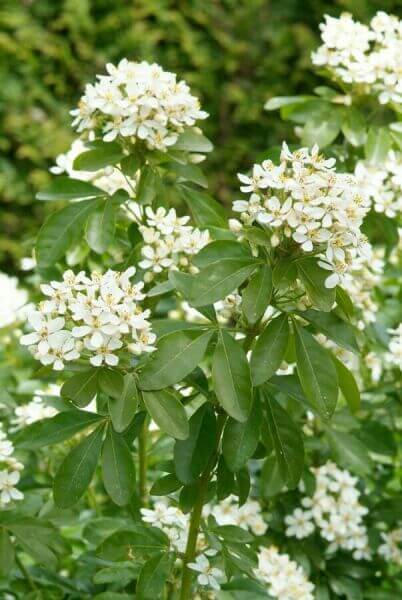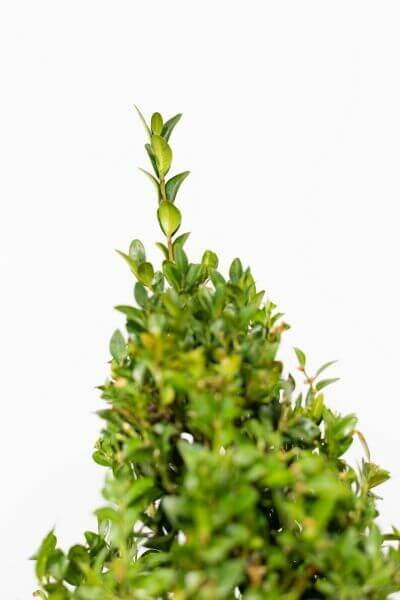Fast-growing Evergreen Hedge Plants
Fast-growing Evergreen Hedge Plants
Blog Article
Best Hedging Plants For Softening Walls
Improve your garden's attraction with rich hedge varieties such as Yew (Taxus), Thuja, Laurel, Photinia, and Bamboo, commemorated for their structural stability and environmental benefits.
Yew and Thuja offer evergreen protection and winter resilience, while Laurel provides quick growth and broad, fragrant leaves.
Photinia includes seasonal charm with its lively red foliage, and Bamboo lends a low-maintenance, serene atmosphere.
These hedges improve air quality, minimize sound, and create tranquil, personal areas.
Proper planting, spacing, and maintenance guarantee energetic growth and ecological consistency.
Check out how these lush varieties can elevate your garden's charm and wellness.
Key Takeaways
Change Your Garden With Lush Hedge Varieties
- Select Yew for its thick, evergreen growth and exceptional durability.
- Choose Laurel for its quick growth and broad leaves, ensuring fast privacy.
- Choose Photinia for its lively seasonal foliage, which turns a striking dark red.
- Make use of Bamboo for a low-maintenance, winter-hardy hedge with aesthetic appeal.
- Space plants 2-3 per meter and prune routinely for optimum development and health.
Popular Hedge Plants
When changing a garden with lavish hedge varieties, it's important to consider popular hedge plants such as Yew, Thuja, Laurel, and Photinia due to their distinct characteristics and benefits.
Yew (Taxus) is highly esteemed for its longevity and dense, green growth, making it a prime choice for withstanding landscapes.
Thuja is noted for its evergreen foliage and robust winter durability.
Photinia adds seasonal vibrancy with red leaves that darken in time, producing dynamic visual appeal.
Laurel offers rapid development and aromatic, broad leaves, suitable for quick personal privacy.
Furthermore, Bamboo is an exceptional option for ambiance, using a low-maintenance, winter-hardy choice that improves the garden's aesthetic with its sophisticated, swaying walking canes.
These choices cater to a variety of horticultural requirements and choices.
Advantages of Garden Hedges
Garden hedges provide a wide variety of advantages, making them a valuable addition to any landscape. These natural barriers are affordable to implement and provide substantial wind defense, boosting air blood circulation and contributing to noise decrease. The dense foliage of hedges like Thuja and Beech makes sure privacy by blocking presence, producing a peaceful and remote environment.
Hedges likewise play an essential role in microclimate policy, providing a steady environment that fosters plant development and reduces temperature changes. Their complex leaf structures filter contaminants, enhancing air quality and contributing to a much healthier garden community.
Furthermore, hedges master sound decrease, absorbing and deflecting acoustic waves to lower ambient noise levels. This double performance of supplying both acoustic and visual privacy boosts the total tranquility and visual appeal of any garden.
Planting and Maintenance Tips
For an effective hedge, careful preparation of the planting area is crucial. Make sure the soil has proper pH and drainage to support strong root advancement.
Space the plants properly for the chosen species. Water the hedge often during its preliminary growth phase, adjusting as required with seasonal modifications.
Implement a organized pest control and illness avoidance method, utilizing organic or chemical treatments when needed. Routinely examine for aphids, termites, and fungal infections.
Apply mulch to keep wetness and suppress weeds. Seasonal pruning promotes thick growth and air blood circulation, important for plant health.
Following these guidelines will help you cultivate a dynamic, well-kept hedge that improves the appeal of your garden.
Spacing and Cutting Standards
Spacing and Cutting Standards
Appropriate spacing and trimming are vital for cultivating healthy, aesthetically appealing hedges. Sufficient spacing ensures each plant receives adequate nutrients, light, and air flow.
Follow these standards for ideal hedge upkeep:
- Spacing: Position hedge plants 2-3 plants per meter to motivate robust growth.
- Pruning Methods: Routine pruning is essential for preserving preferred hedge height and shape. Cut brand-new development in summertime and cut back older wood during winter.
- Seasonal Care: Adjust cutting approaches and schedules according to seasonal requirements to make sure plant health.
- Hedge Height: Routinely screen and cut to keep the preferred hedge height and achieve uniform visual appeals.
Adhering to these actions will guarantee your hedge flourishes, enhancing both the appeal and functionality of your garden.
Picking the Right Hedge
Picking the Right Hedge
Selecting the suitable hedge involves assessing elements such as fully grown height, foliage density, and environmental durability. Successful hedge plant selection requires understanding each species' growth attributes and site-specific versatility.
For example, Yew (Taxus) uses exceptional durability and thick growth, while Thuja is significant for its winter resilience. Additionally, thinking about maintenance requirements is crucial; fast-growing types like Laurel or Privet demand routine trimming, whereas low-maintenance choices like Bamboo or Ivy might be more effective for those seeking very little maintenance.
Ecological aspects such as soil type, light accessibility, and wetness conditions must also direct the selection process. This mindful technique makes sure the selected hedges will grow, providing both functional and aesthetic benefits to the garden landscape.
Delivery and Planting Suggestions
To guarantee your hedge plants prosper, they ought to be delivered by specialized carriers and planted promptly upon arrival.
Follow these necessary steps for effective planting:
- Soil Preparation: Enhance the soil with natural matter to improve drainage and nutrient material.
- Planting Depth: Produce a trench twice the width and equal to the depth of the root ball.
- Watering Strategies: Water thoroughly after planting, keeping the soil consistently moist but not filled.
- Mulching: Apply a layer of mulch to maintain moisture and suppress weeds.
Client Support and Service
Provided the crucial role of timely help in horticultural pursuits, our consumer support group is readily available six days a week through telephone, email, and social media to provide skilled guidance and quickly attend to any issues. Their devotion to fast response times guarantees client fulfillment by resolving questions related to plant health, optimal planting methods, and upkeep schedules.

Reaction Time
-------------------
Email
Six days a week
This thorough support system, reinforced by an outstanding 9.3/ 10 client rating, highlights our dedication to enhancing the gardening experience for each customer.
Regularly Asked Concerns
How Long Does It Take for Hedge Plants to Establish?
Hedge plants read more typically require one to three years to end up being fully developed, with the exact period varying by species and growing conditions.
Efficient care throughout this important duration is vital for robust development. Constant watering, alert weed control, and suitable fertilizer application are critical in promoting strong root development.
For example, fast-growing types like Laurel might establish quicker, while slower-growing varieties such as Yew might take longer. Thorough maintenance accelerates the facility procedure, leading to thick and healthy hedges.
What Are the Best Hedge Plants for Personal Privacy?
The question of the very best hedge plants for privacy involves assessing evergreen and deciduous choices.
Evergreen hedges like Thuja, Laurel, and Cypress supply year-round coverage, guaranteeing constant privacy.
In contrast, deciduous hedges such as Beech provide seasonal personal privacy, shedding leaves in cooler months.
Key maintenance suggestions for privacy hedges include routine cutting, fertilizing in spring, and correct spacing-- normally 2 to 3 plants per meter.
Furthermore, constant watering and thorough weed removal are crucial for promoting healthy, dense development.
Can Hedge Plants Attract Wildlife to My Garden?
Yes, hedge plants can attract wildlife to your garden by providing essential benefits like shelter, food, and nesting websites, therefore improving regional biodiversity. For circumstances, yew, holly, and laurel are outstanding for drawing in birds, while ivy supports a range of insects.
However, it is very important to keep in mind that there are some drawbacks, such as increased maintenance to manage insects and routine maintenance. Thoroughly choosing and keeping hedge varieties can help stabilize these drawbacks and benefits, eventually cultivating a sustainable and lively community in your garden.
Are There Any Blooming Hedge Plants Available?
Yes, there are flowering hedge plants offered that can improve the charm of your garden.
For example, Elaeagnus, also referred to as Olive Willow, produces fragrant white flowers in the fall, including a touch of elegance.
Photinia, another popular choice, showcases lively red leaves that mature into an abundant green, developing a vibrant visual result throughout the seasons.
To ensure these plants thrive, it's vital to practice correct pruning techniques and seasonal upkeep, such as cutting new development in the summer and cutting down in the winter.
These procedures will help maintain the health and aesthetic appeal of your flowering hedges.
How Do I Prevent Bugs in My Hedge Plants?
To prevent bugs in hedge plants, employ natural bug control methods and keep proper hedge care. Present advantageous bugs like ladybugs, which take advantage of harmful insects, to develop a well balanced ecosystem.
Frequently inspect your hedges for signs of problem and without delay get rid of any affected parts to avoid the spread. Ensure the health of your hedges by using balanced fertilizers and providing appropriate water.
Use mulching to retain soil wetness and proper spacing to minimize plant stress and promote robust development. These practices collectively assist in reducing bug problems and keeping a healthy hedge.
Conclusion
In essence, selecting the ideal hedge varieties such as Yew, Thuja, and Laurel can change any garden into a peaceful sanctuary. These plants provide year-round greenery, enhance aesthetic appeal, and deal useful advantages like sound decrease and wind protection.
Appropriate planting strategies, accurate spacing, constant watering, and seasonal trimming are essential for ideal development.
Reputable shipment services and expert customer assistance ensure a smooth experience from purchase to planting, making it simpler than ever to elevate your outside space.
Garden hedges provide a wide range of advantages, making them a valuable addition to any landscape. These natural barriers are economical to execute and supply considerable wind security, boosting air flow and contributing to sound decrease. The dense foliage of hedges like Thuja and Beech guarantees personal privacy by blocking exposure, creating a serene and secluded environment.

Pruning Techniques: Routine pruning is necessary for preserving desired hedge height and shape. Cut new development in summertime and cut back older wood during winter season.
Report this page